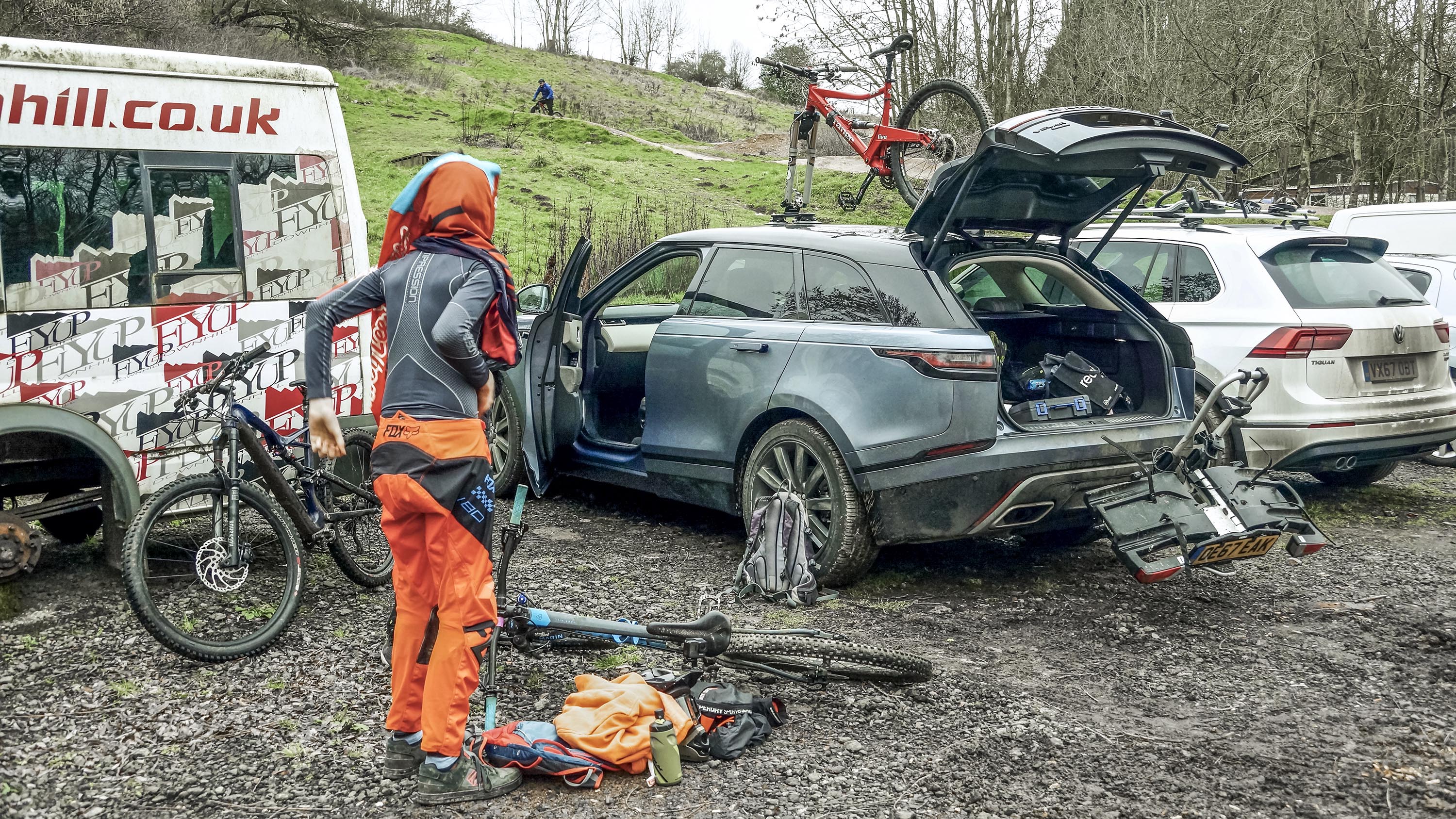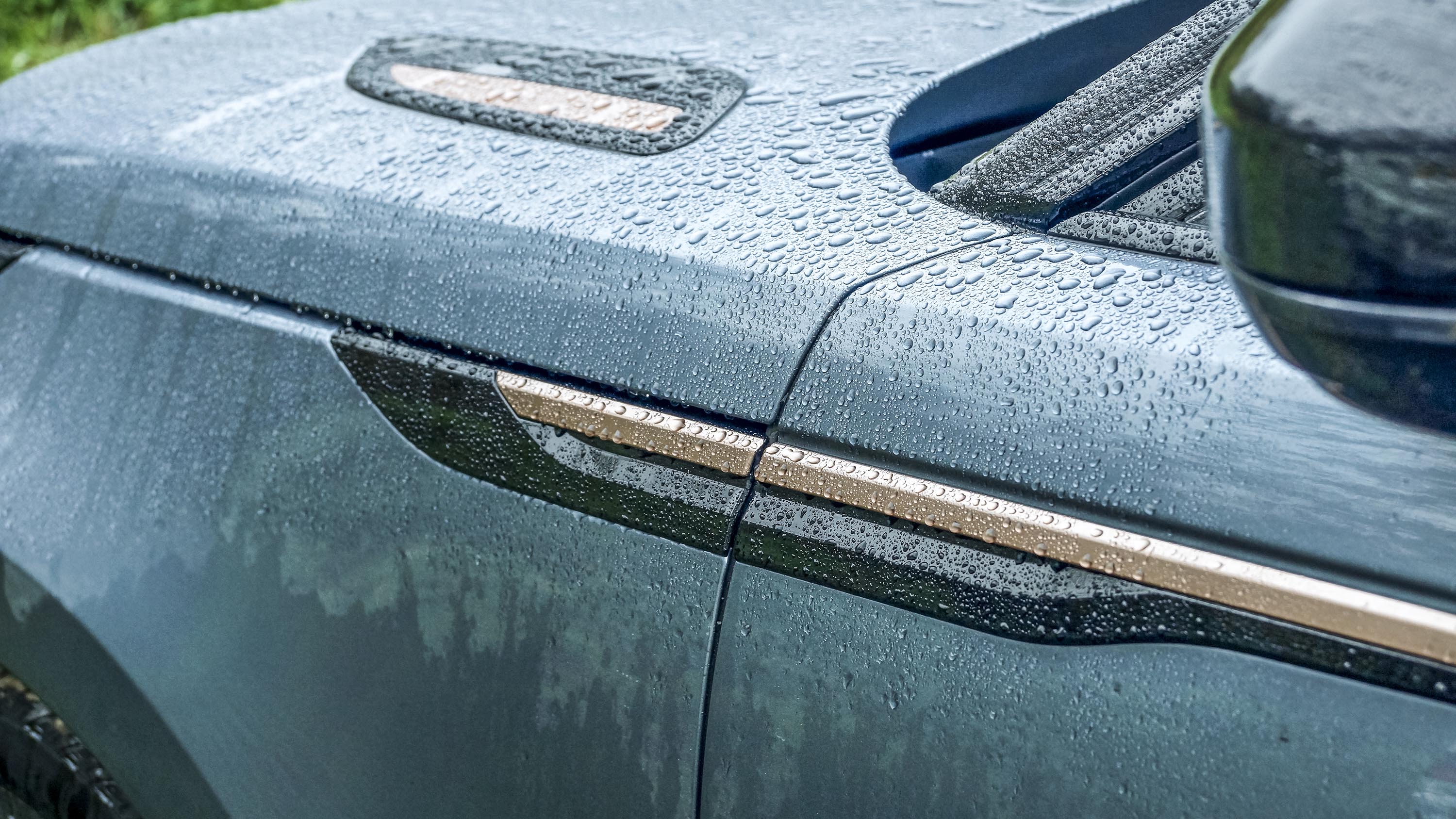
Range Rover Velar - long-term review
£67,740 / £72,145 as tested / £829 PCM
SPEC HIGHLIGHTS
- SPEC
Range Rover Velar R-Dynamic HSE D300
- ENGINE
2993cc
- BHP
300bhp
- MPG
42.8mpg
- 0-62
6.7s
Introducing Top Gear's very handsome Range Rover Velar
A lifestyle car. They never mention what lifestyle do they? So I’m going to find out if the Range Rover Velar fits mine. Which mainly involves commuting, bikes, teenager hauling and tip runs. And very little hanging around on the steps of five star hotels modelling luggage and looking into the middle distance. I’m not sure what to think about the Velar really. It’s the sort of car born to appear in hotel adverts – stylish, desirable, borderline attainable, bit smarmy. Don’t get me wrong, I love the way it looks, but I’m really not sure what it says about me. But I’m not changing.
Took my son and a mate to the FlyUp 417 bike park near Cheltenham a couple of weeks back. The weather was filthy, and so was the car park. The Velar seems to me rather dirt-averse. I felt a bit self-conscious parking up next to the massed ranks of VW T5 vans. The Velar has rose gold highlights. Right then I wished it didn’t. And it’s got the textile dash (£620) and wool seats inside. I’d had to plan well ahead and bring many old sheets for the journey home.
But the £985 electric towbar was a godsend and being able to look up and see suction cups through the £1,115 panoramic glass roof is highly reassuring. Not that many other options fitted to this one actually: Byron blue paint (£725), a black roof (£570) and £390 for privacy glass. That’s it. But then this Velar is already in R-Dynamic HSE spec which means LED headlights, 825w Meridian, 21s and all the rest. And those rose gold inserts. At £67,740 it really isn’t a cheap motor considering a bigger, faster BMW X5 xDrive40d M Sport is five grand less, and for pretty much the same money you could have a 500bhp Alfa Romeo Stelvio Quadrifoglio or a Porsche Cayenne e-hybrid. A lot of choice, in other words.
However, before it arrived my fear for the Velar was that it wouldn’t have a role, that it would feel like a lemon wedged between the Range Rover Sport and Evoque, that Land Rover had just used Jaguar’s F-Pace underpinnings because they were available and plugged a niche. I hoped there would be more to it than just looking great both outside and in (which it absolutely does). And so far I’ve been pleasantly surprised.
One early niggle, though. This Velar is already a year old and has covered 14,000 miles. That’s not the problem. The issue is that since it was built Land Rover has finally bowed to pressure and made Apple Carplay and Android Auto available. This car doesn’t currently have them, meaning I have to interact with the woeful InControl apps system. I vowed I’d give it a good go. And for four weeks I’ve persevered, but honestly, it’s impossible to operate without touching your phone. Just too flaky, dropping the connection and so on. It’s more stable than in the Land Rover Discovery we ran a couple of years back, but the upgrade cost of Carplay/Android on new Velars is £200. It’s an essential.
But for the purposes of this introduction, that’s by the by. Test one for the Velar was to find out how it coped with grime and grind. Well, is the answer. The sheets definitely helped, but the boot swallowed our filthy biking kit more capably than I expected, and although I fretted about sneaky grains of grit and sand being ground into the wool trim, it survived unscathed. More of this, then.
Featured

Trending this week
- Car Review
BMW iX3






